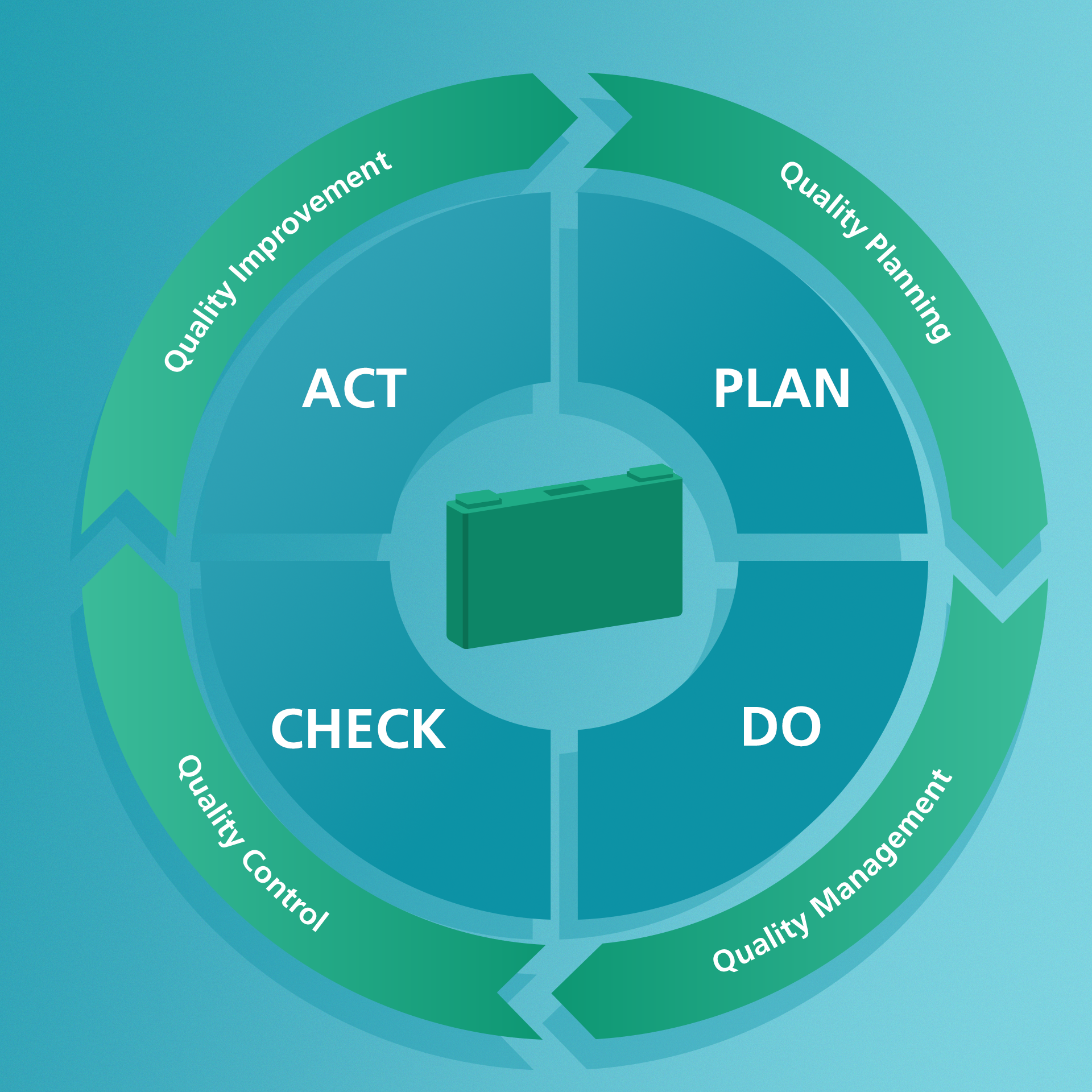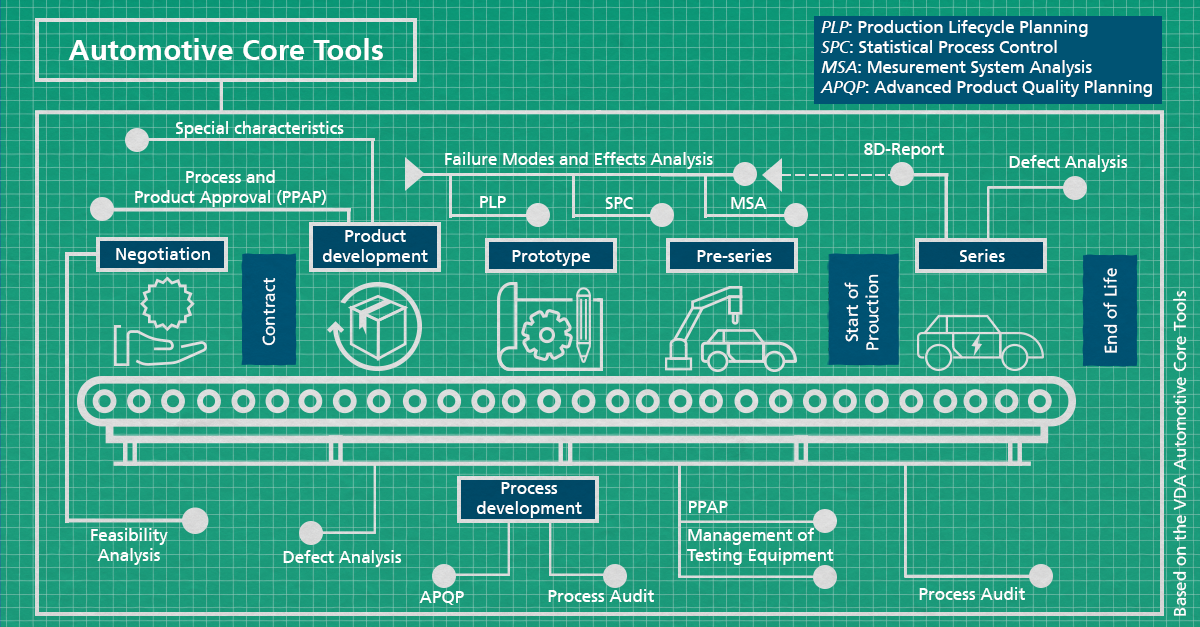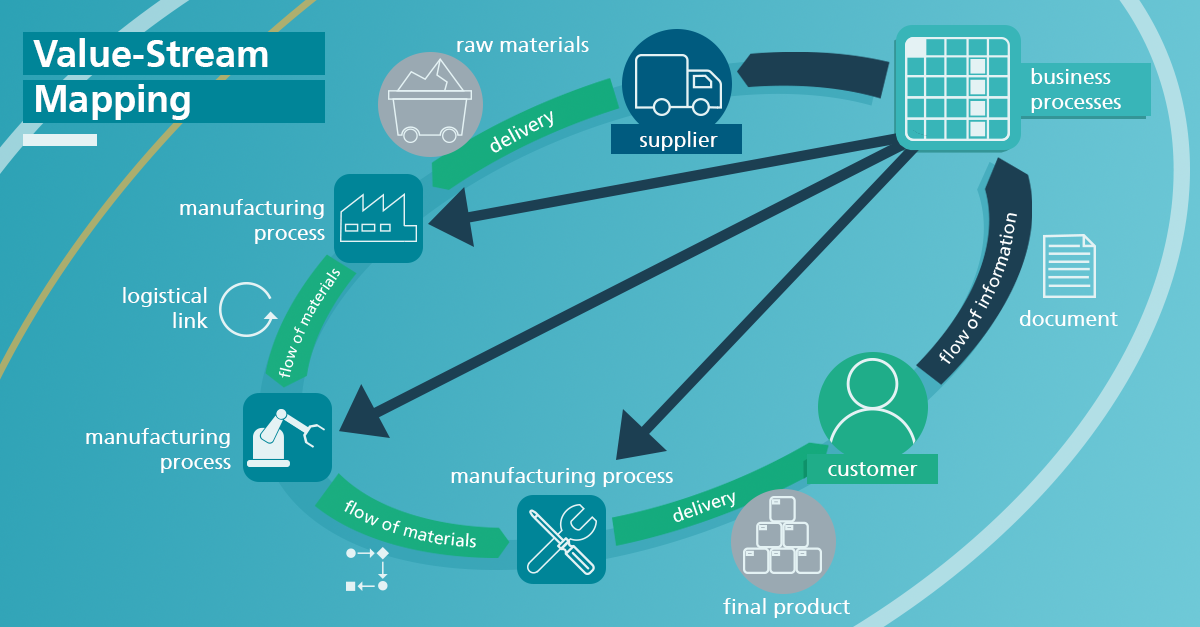Process optimization using the DMAIC cycle
Define, Measure, Analyze, Improve, Control - The DMAIC cycle of the Six Sigma methodology is an effective approach for improving production efficiency. It serves as a foundation for continuous process optimization by addressing key questions in five phases. By applying a systematic and targeted approach, errors or problems can be sustainably eliminated.
1. What is the problem?
In addition to classic brainstorming, interviews, quality function deployment (QFD) or force field analyses can be used to uncover problems in the business or production system as well as product defects.
2. How can the problem be measured?
Measurability can not only be implemented by defining suitable key figures, but a better understanding of the process, e.g. through macigami and value stream mapping, can also uncover weaknesses. The key here is to collect data that can be evaluated in an adequate and standardized way.
3. What is the cause of the problem?
In this step, we get to the bottom of the matter: Cause-effect analyses, FMEAs, Ishikawa, and fault tree analyses or the 5 W method (Why) help to find the actual cause so that the problem can be avoided in the long term.
4. How can the problem be solved?
Once the cause is known, a sustainable solution can be developed and established - Poka Yoke or a 5S workshop are proven methods for this.
5. How is the solution anchored in the business system?
RACI diagrams and change management can help to anchor the solution in the business system in the long term.
Our employees are trained as Six Sigma Black Belts or Green Belts in the relevant teams and combine their methodological knowledge with their expertise in battery cell production to solve the relevant issues in projects with our project partners.


